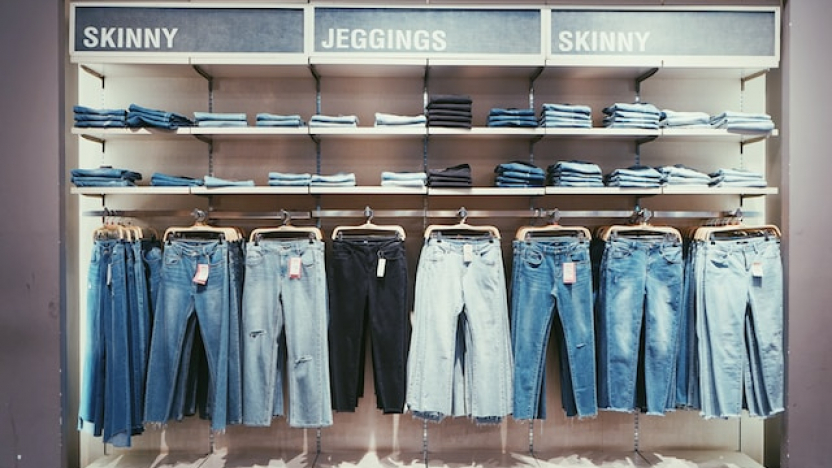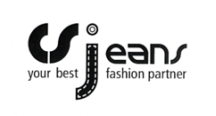EU General Court provides insights on how to prove genuine use

Does the use of a trademark in a connected sector constitute genuine use of that mark? What if that mark is used in differing forms? Florence Chapin outlines a recent EU General Court ruling that provides some answers.
In September 2010, C&S Srl filed an application for registration of the following figurative EU trademark in Class 25 for ‘clothing, footwear, headgear’:
 This was challenged in December 2020 by Scuderia AlphaTauri SpA, which filed an application for revocation of the mark on the ground set out in Article 58(1)(a) of Regulation 2017/1001, namely: cancellation for non-use.
This was challenged in December 2020 by Scuderia AlphaTauri SpA, which filed an application for revocation of the mark on the ground set out in Article 58(1)(a) of Regulation 2017/1001, namely: cancellation for non-use.
The Cancellation Division of the EU IP Office (EUIPO) upheld that application, revoking the mark as of 3 December 2020. On 28 January 2022, C&S filed a notice of appeal at the EUIPO, which was dismissed by its First Board of Appeal. C&S then sought an annulment of the decision from the EU General Court. That court issued its decision on 28 June 2023 (C&S v EUIPO).
What constitutes genuine use?
C&S had raised two main objections to the cancellation decision.
- Use of the contested mark as regards clothing manufacturing services
In order to prove genuine use of the contested mark, C&S submitted, among other things, the following evidence during the administrative proceedings:
- a company registration report of the proprietor of the contested mark;
- financial statements of that company for the years 2015 to 2019;
- several invoices dated between 4 February 2015 and 10 July 2020;
- undated photos of goods and shop fronts;
- a calendar of the ‘Trestina’ football team for the year 2015; and
- undated company presentations of the proprietor of the contested mark.
In light of the evidence submitted, the EUIPO had held that the trademark was not used for clothing as referred to in Class 25, but for clothing manufacturing services.
C&S argued that its use of the contested mark in connection with those services also constituted use of the mark in connection with clothing, adding that the EUIPO and Scuderia AlphaTauri accepted that it is a clothing manufacturing undertaking.
C&S maintained that, in the context of the assessment of a likelihood of confusion, a mark designating ‘clothing’ in Class 25 would be protected even against an identical or similar sign used as a mark designating clothing manufacturing services.
It argued that, according to case law, retail services concerning the sale of specific goods are similar to an average degree to those specific goods. Lastly, it relied on the complementarity between the use of the mark in connection with clothing and the service of manufacturing clothing for third parties.
The contested decision highlighted a point in support of that argument, namely that the calendar of the Trestina football team did not contain any information about the goods offered under the contested mark. Moreover, the invoices dated between 4 February 2015 and 10 July 2020 did not relate to the sale of goods covered by the contested mark, but to the provision of services – namely, the design and custom manufacturing of clothing under the licence of a third-party trademark.
In its ruling, the Board of Appeal had concluded that the calendar and invoices were not solid and objective evidence of the use of the contested mark in relation to the goods covered by that mark. Accordingly, use of a mark in connection with the service of manufacturing clothing could not amount to use of the same mark in connection with clothing.
The EU General Court found that the Board had not made any error of assessment in coming to that conclusion. It also noted that C&S admitted in its pleadings that it is a manufacturing undertaking whose sole activity consists in the manufacturing of clothing. Therefore, the use of the mark in connection with clothing manufacturing services could not be regarded as genuine use of the mark in connection with clothing.
→ On this point, the regulations and case law are very clear: the requirement that there be genuine use of a contested EU trademark must concern the goods or services ‘in respect of which it is registered’. Those provisions do not indicate that use of a mark in connection with goods or services similar to those in respect of which it is registered can be regarded as genuine use of the mark at issue. In that regard, since consumers are searching primarily for a product or service which can meet their specific needs, the purpose or intended use of the product or service in question is vital in directing their choices.
C&S further sought to challenge the validity of the EUIPO decision by invoking the administrative nature of the Nice Classification and, without this being disputed, it was necessary to have recourse to the Nice Classification in order to determine, if need be, the scope and even the meaning of the goods and services for which a mark has been registered (see DTM Ricambi v OHIM). The court found that, in view of the clear literal meaning of the list of goods in Class 25, namely ‘clothing, footwear, headgear’, the consideration that clothing and the service of manufacturing clothing can be distinguished from each other and cannot be confused in the context of demonstrating genuine use of the contested mark was the result of an interpretation which was perfectly coherent.
Lastly, C&S argued that a mark designating ‘clothing’ would be protected even against an identical or similar sign covering clothing manufacturing services and that retail services concerning the sale of specific goods were similar to an average degree to those specific goods. The court, however, did not agree.
2. Use of the mark in an altered form
 C&S claimed that, contrary to what the Board of Appeal had found, it made use of the contested mark in a form differing in elements which did not alter the distinctive character of that mark in the form in which it had been registered. The mark was used for the goods for which it was registered in the form shown right:
C&S claimed that, contrary to what the Board of Appeal had found, it made use of the contested mark in a form differing in elements which did not alter the distinctive character of that mark in the form in which it had been registered. The mark was used for the goods for which it was registered in the form shown right:
Regarding the registered mark (pictured top), the Board of Appeal had found that:
- 1. the distinctive elements of the contested mark consisted of the highly stylised group of letters ‘CS’ and the stylised word ‘jeans’; and
- 2. the word element ‘your best fashion partner’ was lacking in distinctive character, since the relevant public would perceive it as a laudatory slogan.
It took the view that the word element ‘jeans’ was not purely descriptive, but that it had a low degree of distinctiveness on the ground that the letter ‘j’ stood out from the group of letters ‘eans’ because of its larger size and its graphical elements in the form of stitches and a button; and the word ‘jeans’ was stylised.
Regarding the mark as used, the Board of Appeal had taken the view that the omission of the word ‘jeans’ altered the distinctive character of the contested mark for the following reasons:
- 1. Because of its stylisation, the word element ‘jeans’ had a low degree of distinctiveness and could not be considered to be merely descriptive.
- 2. That word element interacted with the other elements of the contested mark, in particular the figurative element representing the group of uppercase letters ‘CS’. The letter ‘j’ was of the same size as the letters of the figurative element ‘CS’ in uppercase and that arrangement created a visual link between that figurative element and the group of letters ‘eans’.
- 3. The stylised word ‘jeans’ occupied a co-dominant position together with the figurative element representing the group of letters ‘CS’ in uppercase and was visually outstanding, on account of its size and position, in the overall impression created by the contested mark.
In its ruling, the EU General Court found that the applicant’s reasoning was based on the incorrect view that the figurative sign representing the group of uppercase letters ‘CS’ constituted the only distinctive element of the mark, and that the word element ‘jeans’ and the expression ‘your best fashion partner’ had no distinctive character. Further, it was not apparent from the case file that the consumer would perceive the figurative element representing the group of uppercase letters ‘CS’ as the dominant part of the mark or that the element ‘jeans’ was negligible. In the light of the above, the court dismissed the action.
The importance of genuine use – and supporting evidence
Proof of use is essential to prevent any strategy of opposition or cancellation of a mark, since trademark owners who do not use their trademarks are exposed to increased risk.
The protection afforded by mere registration is short-lived, and the registers are clogged. To benefit from an exclusive monopoly, trademark owners must make real and serious use of the mark, and be able to prove as such if challenged.
It is advisable, therefore, to prepare to attack or retaliate against third parties. This includes using your trademarks, especially in the form in which they were registered (it is advisable to audit portfolios regularly); and building up trademark use files (evidence) on a regular basis for all the products and services covered by the registration, so it will be possible to defend yourself quickly in case of legal action.
Read our article ‘Trademark tips: Preparing evidence of use’ for a detailed list of recommended best practices for gathering evidence or contact us below for tailored advice.
Florence Chapin is a French and European Trademark Attorney based at Novagraaf in Bordeaux.
This article first appeared in WTR Daily, part of World Trademark Review, in July 2023.